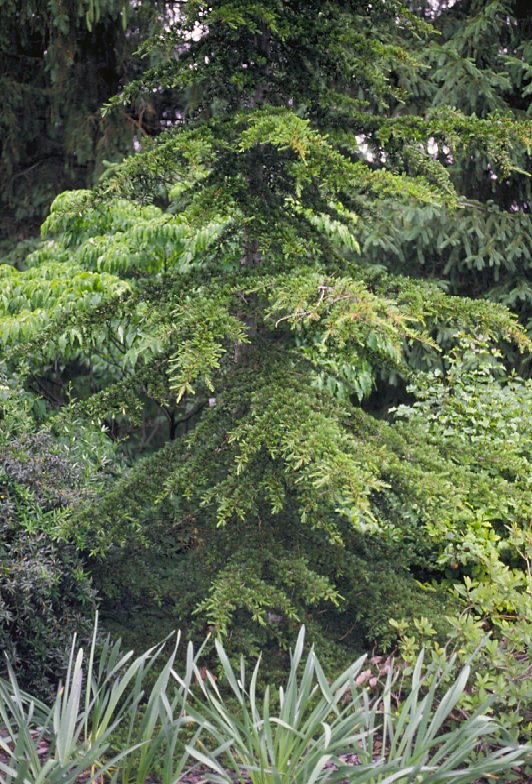| Botanical Name: Cedrus libani | |
| Common Name: Cedar Of Lebanon |

-
Anatomy
-
Culture
-
Design
Plant Type
Tree, Conifer
Height Range
25-40', 40-60'
Flower Color
n/a
Flower Season
n/a
Leaf Color
Dark Green
Bark Color
Brown, Grey
Fruit Color
Brown
Fruit Season
Winter, Fall
Sun
Full
Water
Medium
Growth Rate
Slow
Soil Type
Clay, Loam, Rocky, Unparticular
Soil Condition
Average, Rich, Well-drained, Dry
Soil pH
Neutral
Adverse Factors
n/a
Design Styles
Formal, Mediterranean, Ranch, Woodland
Accenting Features
Silhouette, Specimen
Seasonal Interest
Winter, Spring, Summer, Fall
Location Uses
Background, Lawn
Special Uses
Screen, Wind Break, Shade Tree
Attracts Wildlife
n/a
Information by: Stephanie Duer
Photographer: Connon Nursery, JJ Neilso
Photographer: Connon Nursery, JJ Neilso
-
Description
-
Notes
Cedar of Lebanon is a large evergreen conifer, growing 40 to 60 feet tall and 25 to 50 feet wide, though it will do so slowly. It has a pyramidal form in its youth spreading out and becoming more flat topped as it ages. The needles are a dark green; 3-inch long cones are purple-brown; and bark is a warm grey-brown. This is a very larg tree and needs to be planted where it will have ample room.
Plant in full sun and well drained soil. Prefers a deep, loamy-clay soil. Intolerant of shade. Does well in dry, arid climates. Somewhat difficult to transplant which may account for it being not more available. Cedar of Lebanon is very cold hardy, listed as USDA Zone 5, and rated as hardy to -15 to 25F.